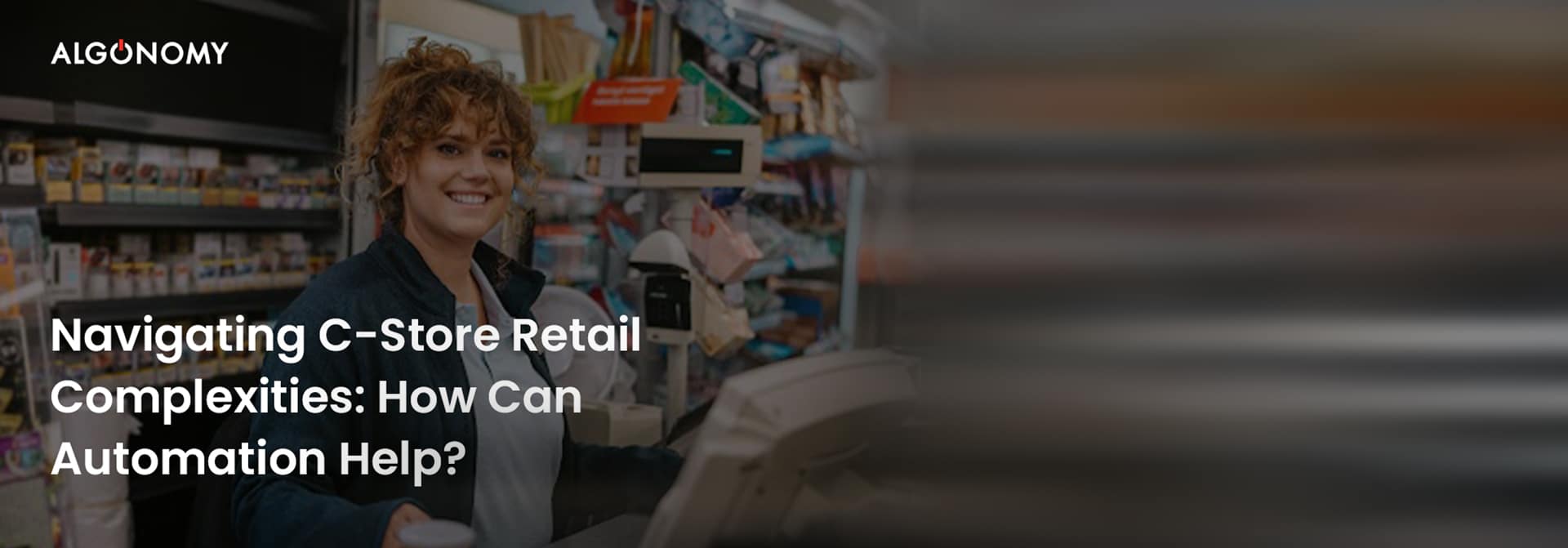With a staggering 150 Million+ convenience stores and a record 160 million transactions per day in the US alone, convenience store retail emerges as a delectable opportunity. However, 42% of the customers shopping at C-stores consider “having the right stock” to be one of the most important factors for a delightful experience. Add the constantly fluctuating pool of suppliers, micro-trends affecting sales, and highly evolving demand patterns to the mix, and retailers are left with nothing short of a mind-bender.
The traditional replenishment planning approach crumbles in the face of the challenging C-store landscape due to the inability to predict demand across multiple locations, optimize inventory ROI, and plan promotions that don’t cannibalize sales. So, how can retailers break out of the vicious cycle of having too much stock or empty shelves, and how can they entice customers with loyalty programs without compromising margins? How can they simplify new product introductions and supplier collaboration at a scale?
Let’s dive into the answers!
#1 – Managing Unpredictable Demand Patterns
As many as 88% of customers consider the experience provided by a brand to be as valuable as its products or services. However, the short product lifecycle in quick-moving C-store retail and highly fluctuating demand patterns make it hard to decode customer delight. Traditional inventory planning lacks agility and fails to adapt to quick demand changes or anticipate key metrics such as “what” or “how”.
On the other hand, intelligent replenishment built on top of AI-driven demand planning overcomes these bottlenecks. Retailers can generate highly precise order plans with a few clicks while factoring in diverse, complex, and granular sales influencers for C-store retail. They can optimize inventory for specific locations, stores, channels, products, etc. while reducing inventory costs and improving accurate shelf availability.
#2 – Incorporating Micro-Granular Sales Influencers
C-store retail has extremely complex and elusive sales influencers or parameters, such as time of the day, season, holidays, local events nearby, new product launches, short-term trends, and many other locality-specific factors. So, mastering inventory planning requires a careful analysis of all these factors which might be highly subjective and far beyond the computational expertise of traditional replenishment solutions.
Replenishment planning solutions with the in-built intelligence of AI and ML algorithms can easily generate precise order plans for specific locations while adjusting to specific sales influencing parameters at scale. Thus retailers can optimize inventory across multiple locations without having to switch interfaces while adapting to customer preferences and historical sales data at an ultra-granular or hyperlocal level.
#3 – Managing Promotions Chaos-Free
Loyalty programs, bundled offerings, and promotions (discounts and sales) are some of the most challenging aspects of C-store strategizing. The inability to analyze and map the effects of such offerings in advance is one of the major driving forces behind this. As the local parameters influence the demand patterns and inventory, and products are replaced at a quick pace, promotions become trickier to manage.
AI and ML-driven solutions inherently incorporate data from multiple sources, such as promotions, historical sales, and more, and all the order plans are generated accordingly. Thus, the retailers can easily optimize the inventory for specific locations in a data-driven manner.
#4 – Competition From Quick Delivery Services
The emergence of quick delivery services that deliver food and other essentials in time-crunched delivery windows has given solid competition to the convenience store retail model. These quick delivery services offer a great assortment of goods and the convenience of getting everything delivered to your doorstep. Hence, offering variety is no longer a critical business differentiator. Retailers need to play smart when it comes to offering assortment as well as delightful customer experience, such as offering bundled offerings, and loyalty programs, and aligning the promotions with the changing customer demand patterns.
Such careful planning of inventory operations while ensuring cost-effectiveness and streamlined management across the entire supply chain is a massive enigma. Integrating technology for multiple format retailing, optimizing replenishment specifically for high ROI products, at store, channel, category, or SKU level, and constantly adding/removing products for optimal profitability can emerge as a powerful solution.
#5 – Sustainable Operations
Global consumer preferences have changed after the pandemic, willing to pay a sustainability premium of 9.7%. Wastage, supply chains with high CO2 emissions, and cost-intensive sourcing are making consumers disgruntled, and organic, locally sourced fresh produce is seeing higher demand.
AI-driven replenishment optimizes inventory to reduce stockouts as well as out-of-stock events while increasing shelf availability and decreasing inventory spoilage by up to 30%. This is also a strong point in favor of C-store retail as compared to quick delivery services where the carbon cost of deliveries is very high.
#6 – Constantly Evolving Supplier Network
C-store retailers have a wide supplier network that is constantly changing with suppliers moving in or out of the network, based on the newly introduced or discounted products. Disparate supplier management interfaces lead to errors, tedious finance management, and clunky supply chain operations. Thus, retailers can land in supply-side complexities that can disrupt functioning and also leave a dent in finances.
Automated supplier management solutions facilitate quick supplier onboarding and efficient management of suppliers via in-built workflows for cross-functional decision-making. Capabilities such as EDI, digital cataloging, automated invoice reconciliation, and more can reduce paperwork, minimize errors, and ensure transparent status tracking.
The landscape of convenience stores is rapidly changing, with new demands on product offerings, a shift towards sustainability, and the need for seamless integration between in-store and online experiences. To stay ahead, C-store leaders must rethink strategies for retail planning, inventory management, and collaboration.
Also read: 5 Reasons Why Your Store Replenishment Might Be Ineffective












